Abstract
Metabolism of linalyl acetate by Pseudomonas incognita isolated by enrichment culture on the acyclic monoterpene alcohol linalool was studied. Biodegradation of linalyl acetate by this strain resulted in the formation of linalool, linalool-8-carboxylic acid, oleuropeic acid, and Δ5-4-acetoxy-4-methyl hexenoic acid. Cells adapted to linalyl acetate metabolized linalyl acetate-8-aldehyde to linalool-8-carboxylic acid, linalyl acetate-8-carboxylic acid, Δ5-4-acetoxy-4-methyl hexenoic acid, and geraniol-8-carboxylic acid. Resting cell suspensions previously grown with linalyl acetate oxidized linalyl acetate-8-aldehyde to linalyl acetate-8-carboxylic acid, Δ5-4-acetoxy-4-methyl hexenoic acid, and pyruvic acid. The crude cell-free extract (10,000 g of supernatant), obtained from the sonicate of linalyl acetate-grown cells, was shown to contain enzyme systems responsible for the formation of linalyl acetate-8-carboxylic acid and linalool-8-carboxylic acid from linalyl acetate. The same supernatant contained NAD-linked alcohol and aldehyde dehydrogenases involved in the formation of linalyl acetate-8-aldehyde and linalyl acetate-8-carboxylic acid, respectively. On the basis of various metabolites isolated from the culture medium, resting cell experiments, growth and manometric studies carried out with the isolated metabolites as well as related synthetic analogs, and the preliminary enzymatic studies performed with the cell-free extract, a probable pathway for the microbial degradation of linalyl acetate with the acetoxy group intact is suggested.
Full text
PDF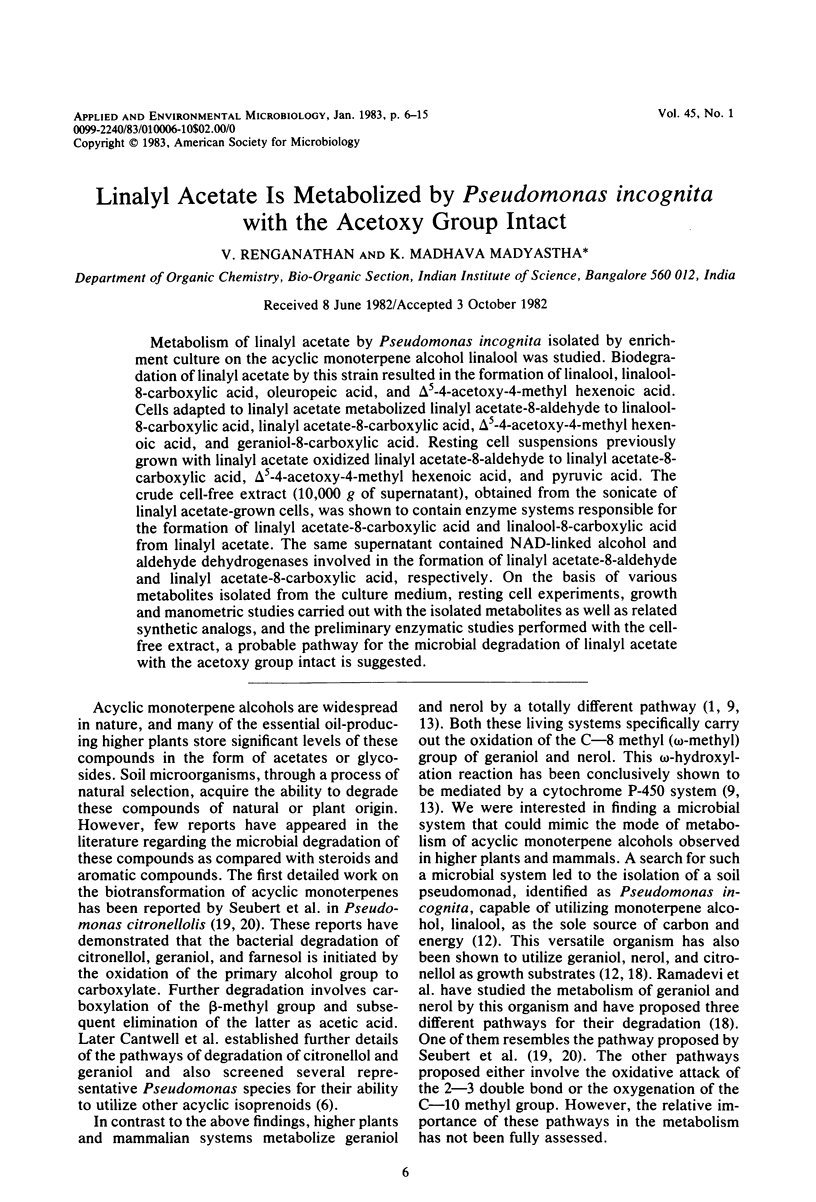
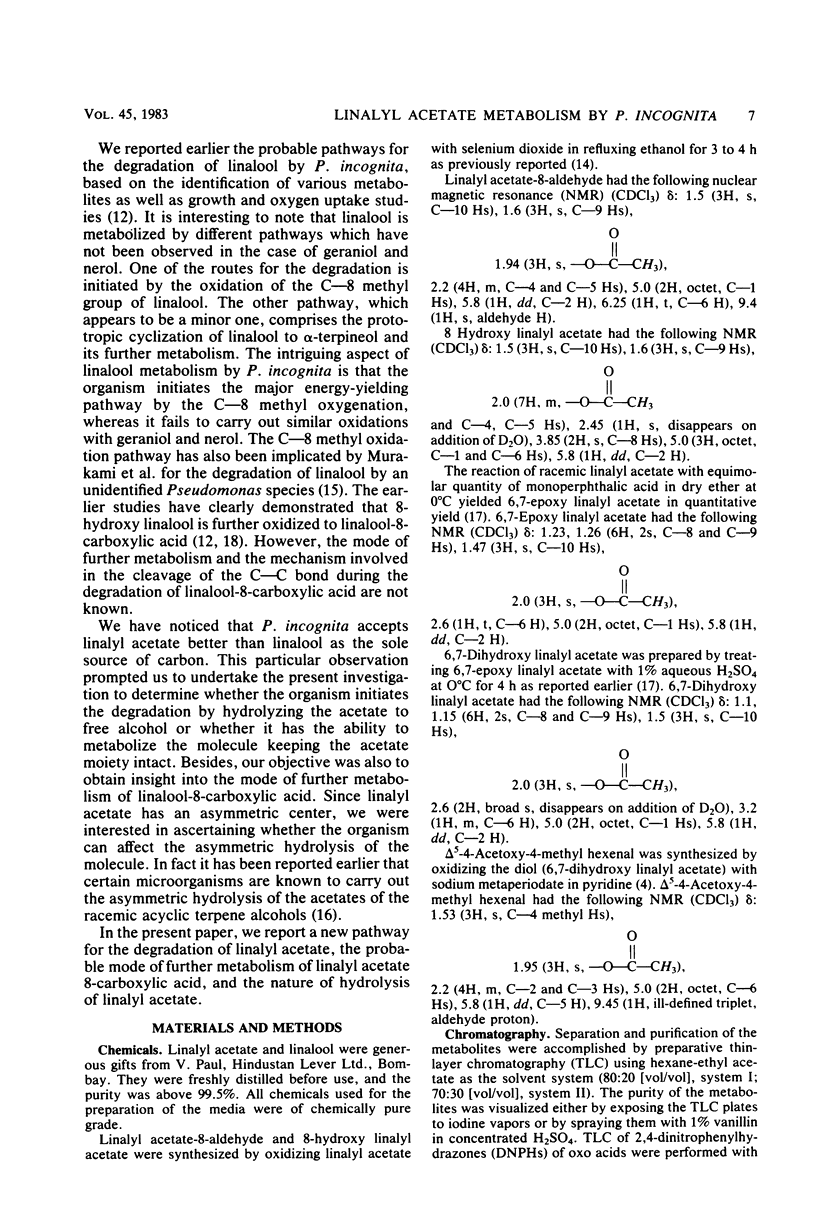
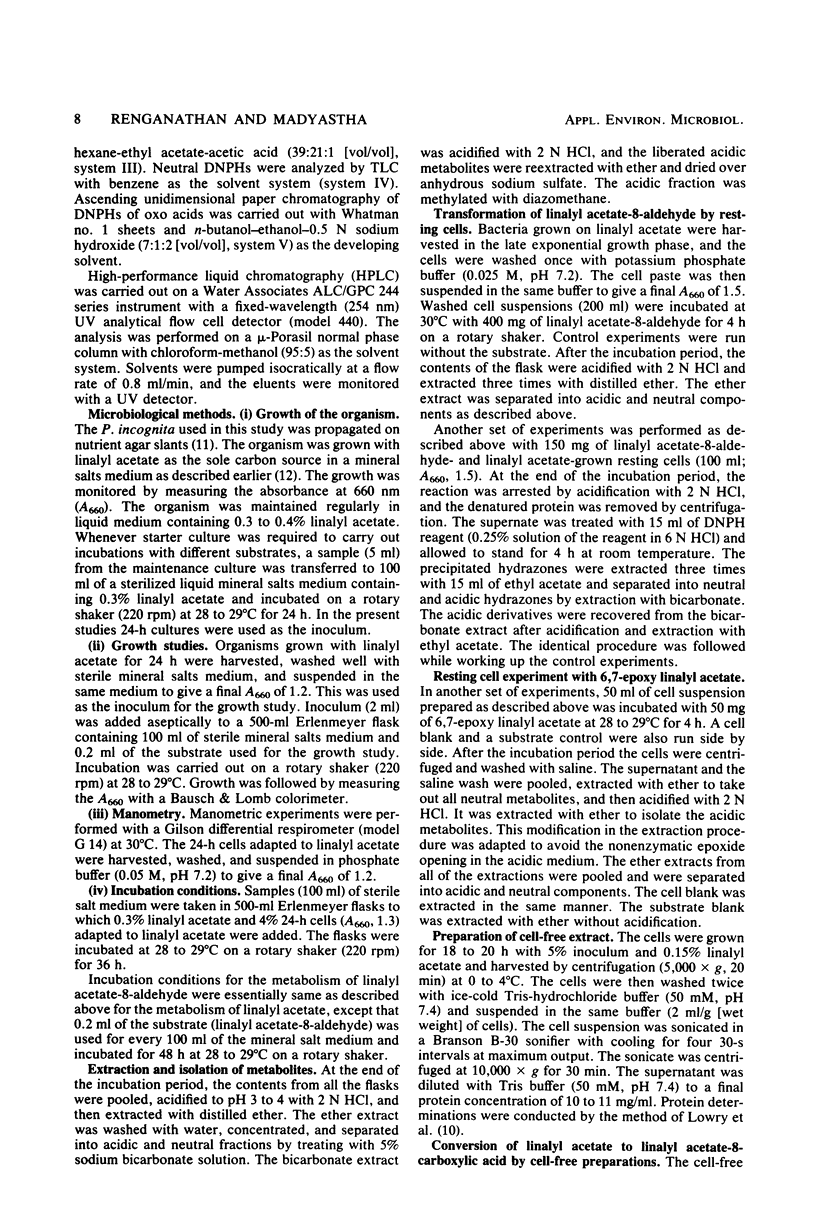
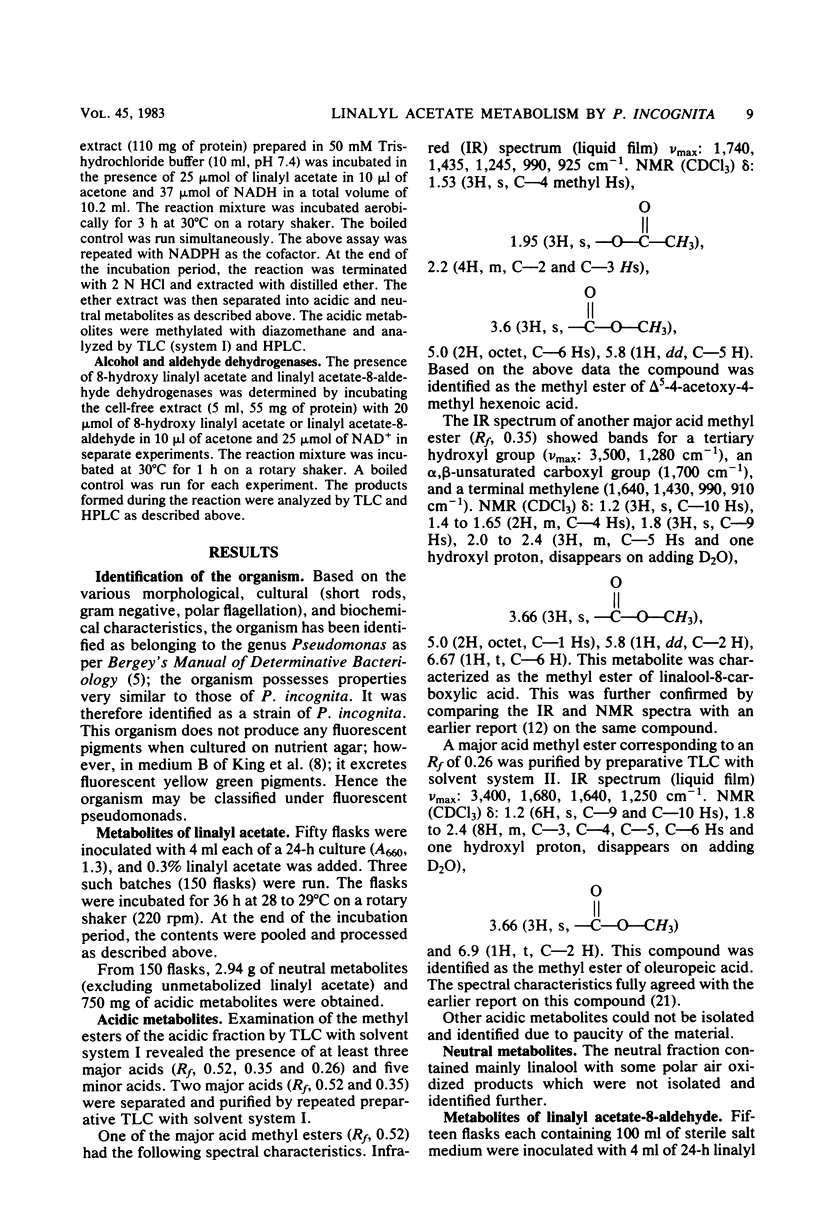
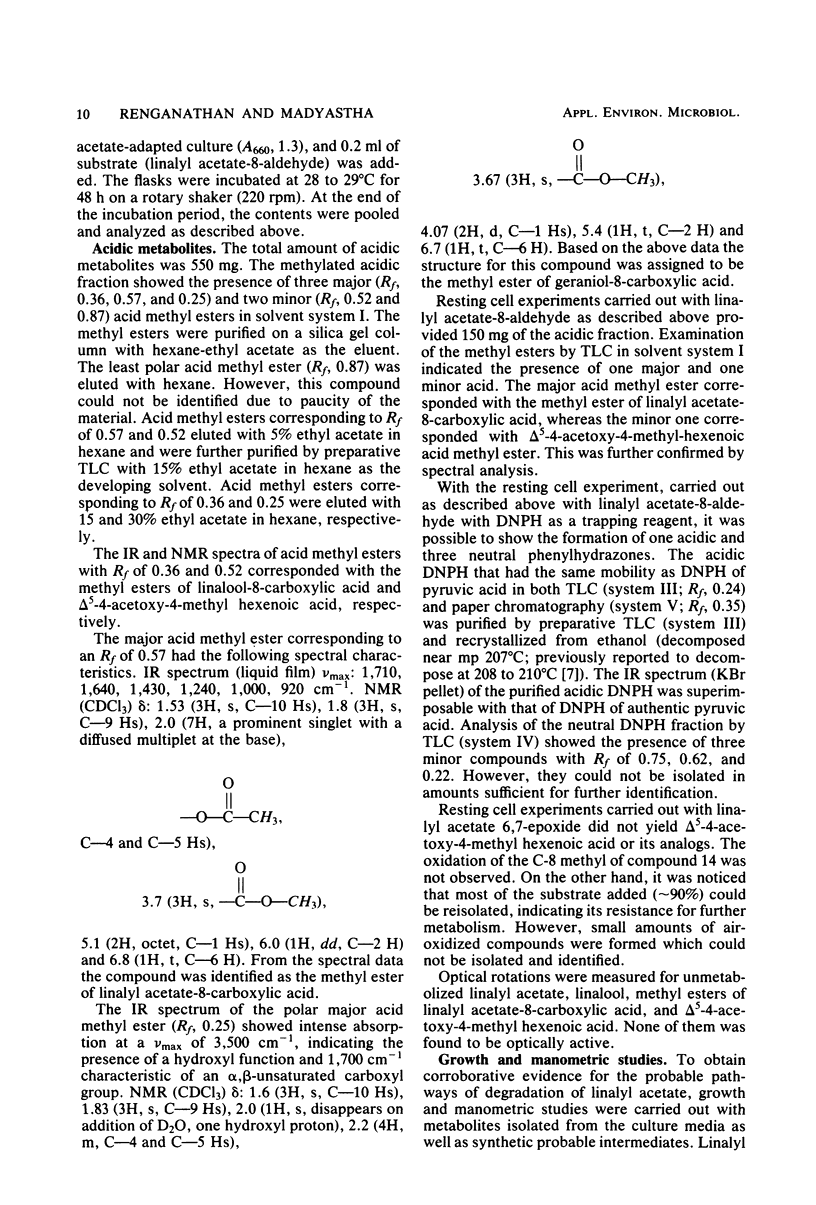
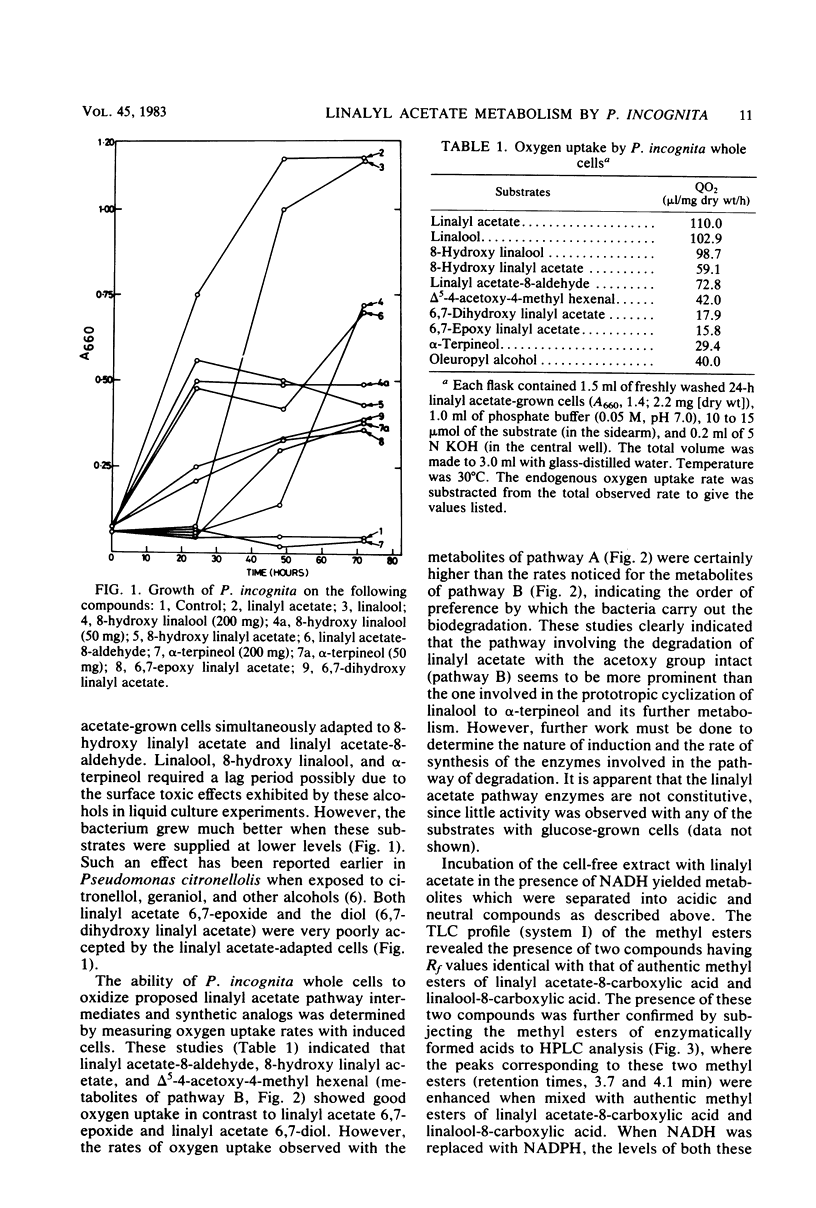
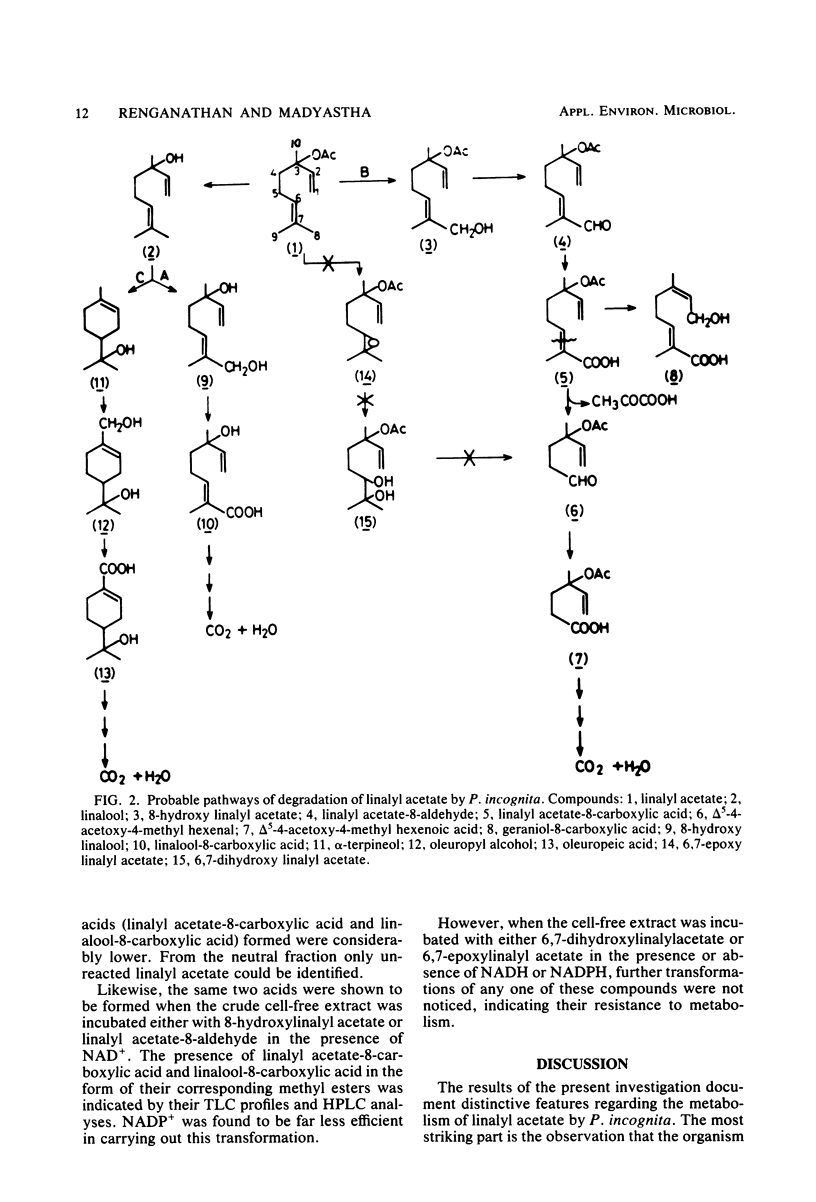
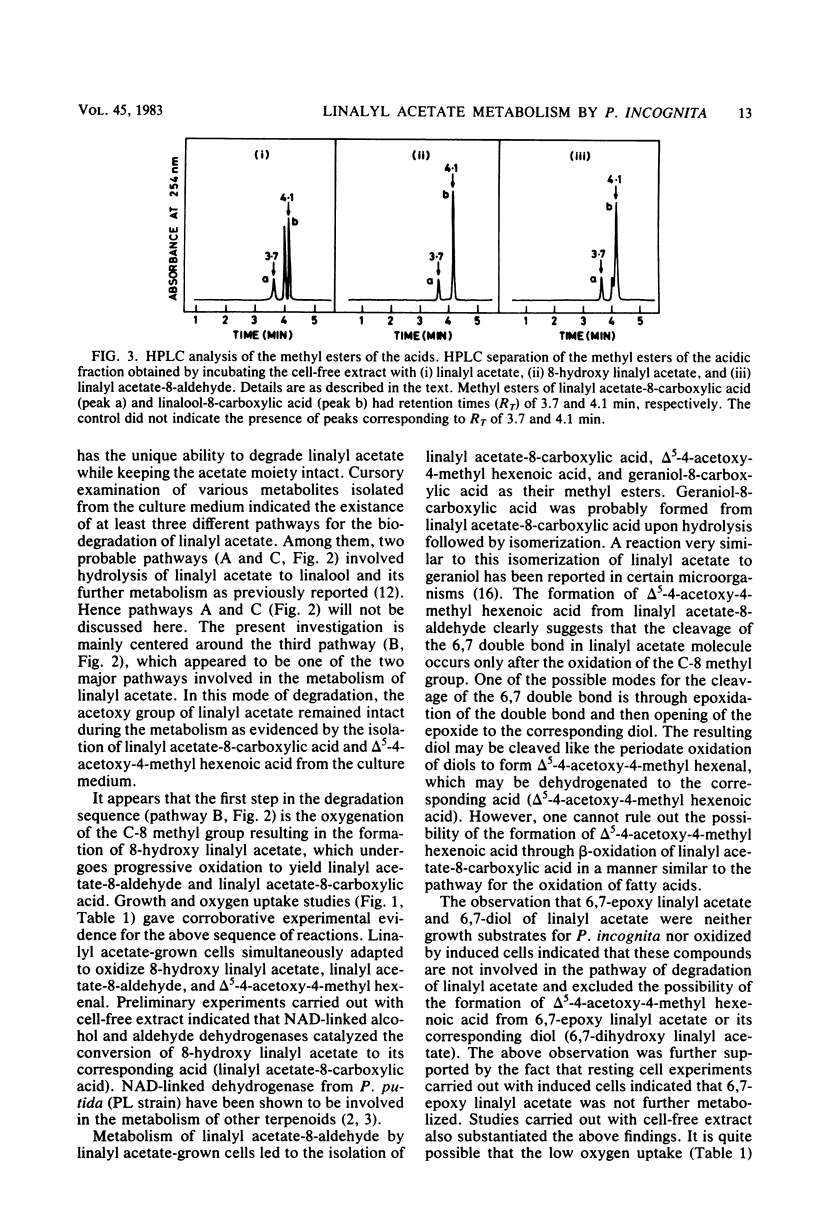
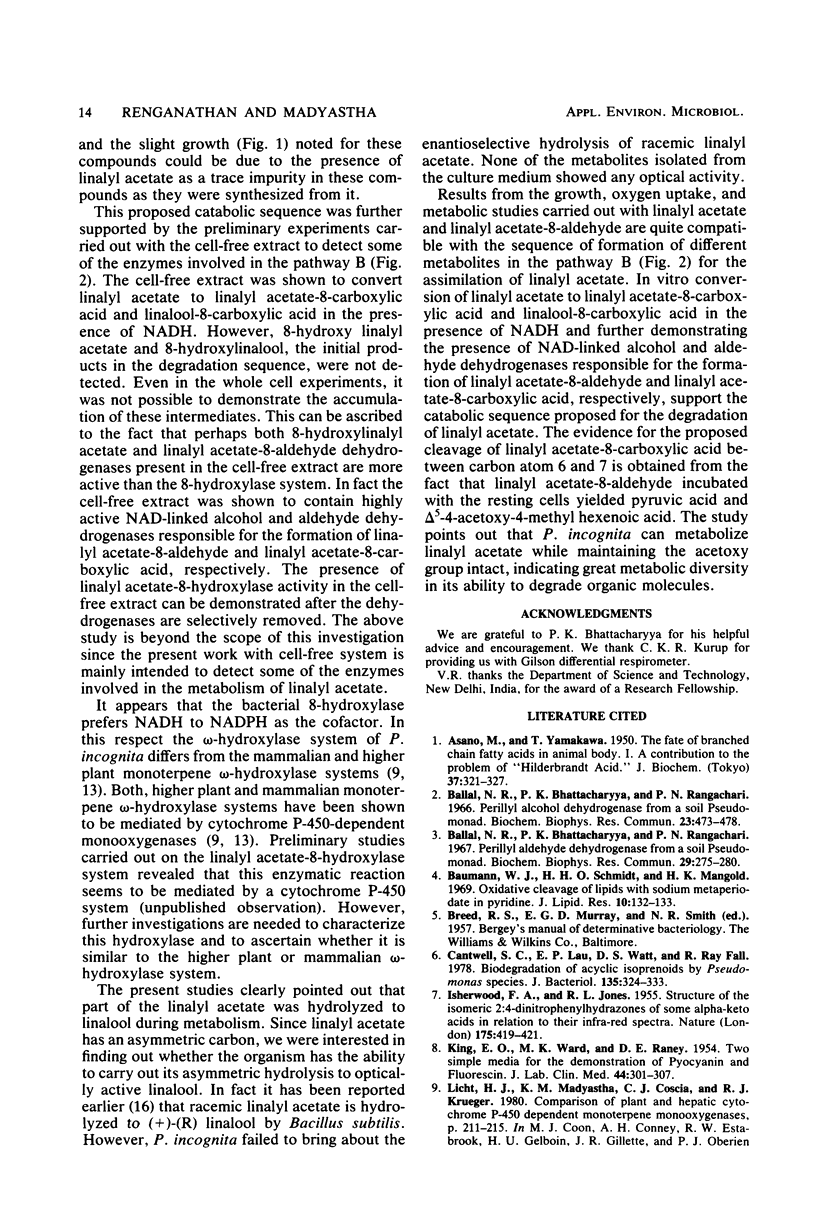
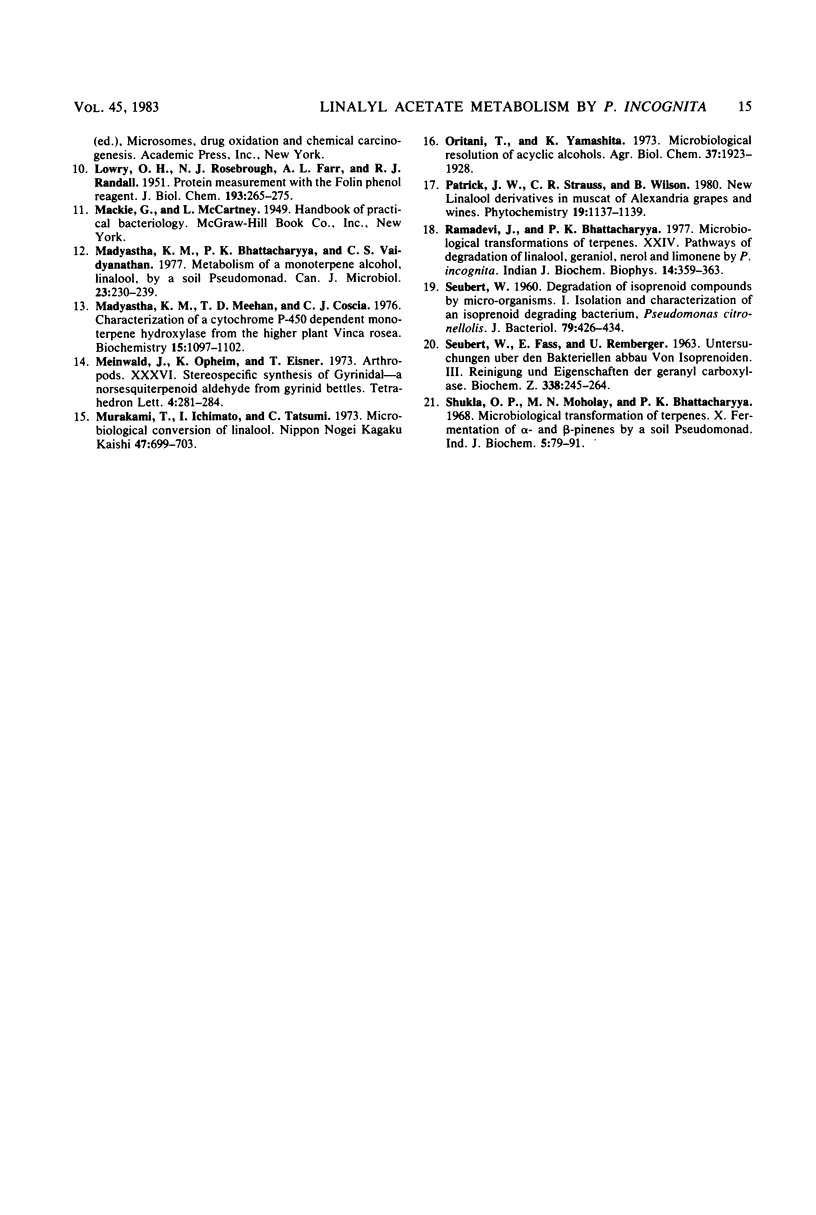
Selected References
These references are in PubMed. This may not be the complete list of references from this article.
- Ballal N. R., Bhattacharyya P. K., Rangachari P. N. Perillyl alcohol dehydrogenase from a soil pseudomonad. Biochem Biophys Res Commun. 1966 May 25;23(4):473–478. doi: 10.1016/0006-291x(66)90752-2. [DOI] [PubMed] [Google Scholar]
- Ballal N. R., Bhattacharyya P. K., Rangachari P. N. Perillyl aldehyde dehydrogenase from a soil pseudomonad. Biochem Biophys Res Commun. 1967 Nov 17;29(3):275–280. doi: 10.1016/0006-291x(67)90448-2. [DOI] [PubMed] [Google Scholar]
- Baumann W. J., Schmid H. H., Mangold H. K. Oxidative cleavage of lipids with sodium metaperiodate in pyridine. J Lipid Res. 1969 Jan;10(1):132–133. [PubMed] [Google Scholar]
- Cantwell S. G., Lau E. P., Watt D. S., Fall R. R. Biodegradation of acyclic isoprenoids by Pseudomonas species. J Bacteriol. 1978 Aug;135(2):324–333. doi: 10.1128/jb.135.2.324-333.1978. [DOI] [PMC free article] [PubMed] [Google Scholar]
- Devi J. R., Bhattacharyya P. K. Microbiological transformations of terpenes: Part XXIV--Pathways of degradation of linalool, geraniol, nerol & limonene by Pseudomonas incognita (linalool strain). Indian J Biochem Biophys. 1977 Dec;14(4):359–363. [PubMed] [Google Scholar]
- KING E. O., WARD M. K., RANEY D. E. Two simple media for the demonstration of pyocyanin and fluorescin. J Lab Clin Med. 1954 Aug;44(2):301–307. [PubMed] [Google Scholar]
- LOWRY O. H., ROSEBROUGH N. J., FARR A. L., RANDALL R. J. Protein measurement with the Folin phenol reagent. J Biol Chem. 1951 Nov;193(1):265–275. [PubMed] [Google Scholar]
- Madyastha K. M., Meehan T. D., Coscia C. J. Characterization of a cytochrome P-450 dependent monoterpene hydroxylase from the higher plant Vinca rosea. Biochemistry. 1976 Mar 9;15(5):1097–1102. doi: 10.1021/bi00650a023. [DOI] [PubMed] [Google Scholar]
- Madyastha K., Bhattacharyya P. K., Vaidyanathan C. S. Metabolism of monoterpene alcohol, linalool, by a soil pseudomonad. Can J Microbiol. 1977 Mar;23(3):230–239. doi: 10.1139/m77-035. [DOI] [PubMed] [Google Scholar]
- SEUBERT W. Degradation of isoprenoid compounds by micro-organisms. I. Isolation and characterization of an isoprenoid-degrading bacterium, Pseudomonas citronellolis n. sp. J Bacteriol. 1960 Mar;79:426–434. doi: 10.1128/jb.79.3.426-434.1960. [DOI] [PMC free article] [PubMed] [Google Scholar]
- SEUBERT W., REMBERGER U. UNTERSUCHUNGEN UEBER DEN BAKTERIELLEN ABBAU VON ISOPRENOIDEN. II. DIE ROLLE DER KOHLENSAEURE. Biochem Z. 1963;338:245–264. [PubMed] [Google Scholar]


